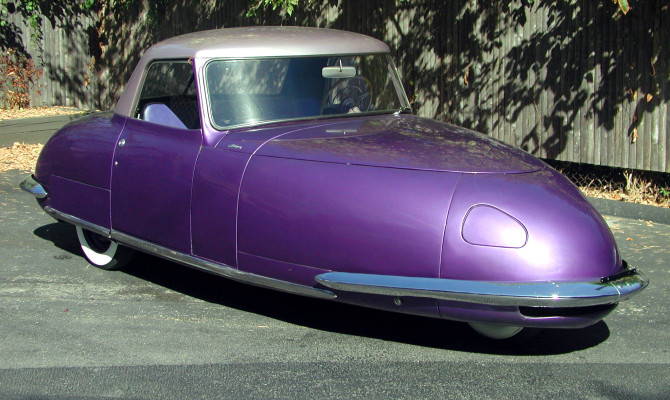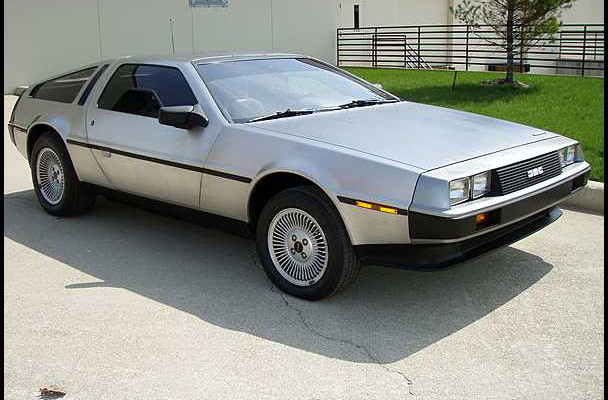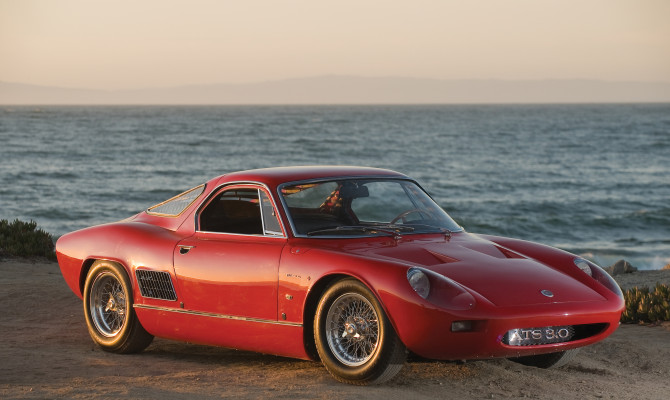Hundred-year anniversaries in the automotive world are nearly as common as new reality TV shows (General Motors, Aston Martin and Alfa Romeo all turned 100 recently).
The car companies on this list weren’t as fortunate…
Davis (1947-48)
The Davis Car Company was founded in 1947 in Van Nuys, Calif., by entrepreneur Gary Davis, who for reasons best known to himself decided that America was ready for a tiny three-wheeled car with just 47 hp. Like the next car company on the list, Davis also took advantage of a surplus WW2 defense plant as his base of operations. With the fast-developing freeway culture in Southern California (the car’s introduction coincided with the adoption of a comprehensive freeway plan for the region), there was little demand for an underpowered three-wheeler wholly unsuited for freeway use. The company collapsed in 1948 under the weight of unpaid employees and suppliers. The founder was jailed for fraud.
Tucker (1948)
The Tucker story is probably the least comical of the bunch. Preston Tucker conceived a car with some truly innovative safety and performance features. Its merits were considerable and it deserved to succeed. Sadly, it wasn’t to be. Negative publicity — and, many say, a conspiracy among the legacy automakers — coupled with an SEC investigation put a quick end to Tucker. About 50 cars were built in an ex-defense plant in Chicago before Tucker folded in early 1949, and 1948 was the only model year for the car known as the Tucker 48. The entire sad saga was chronicled in the 1988 Francis Ford Coppola film “Tucker: A Man and His Dreams.” Today, most of the cars survive as cherished museum pieces and in private collections. Tuckers have brought as much as $2 million at classic car auctions.
Bricklin (1974-76)
Malcolm Bricklin just can’t stay out of the automotive industry. An early investor in Subaru of North America, he sold his stake to finance his dream — a “safety” sports car bearing his name. Sports cars and safety have never gone hand in hand, and some would even argue that an element of danger is part of their raffish charm. Not surprisingly, there was little demand for a “safe” sports car offered in colors like Safety Orange, Safety Green, Safety White and Safety Suntan (an odd, fleshy beige color). Safety Red was the only conventional color. Bricklins were built by a largely inexperienced workforce in New Brunswick, Canada, from 1974-76. Poor quality control — the gullwing doors were famous for trapping occupants inside — and low demand sunk Bricklin, leaving the Canadian government to foot the bills. Little was learned from the debacle. (See: DeLorean.) Bricklin went on to bring to America the much-reviled Yugo.
DeLorean (1981-83)
Ex-GM superstar John Z. DeLorean stole a page from the Bricklin playbook. Just five years later, he convinced another gullible government (this time, the UK Labour Party) to build a factory in another high unemployment area (troubled Belfast, Northern Ireland) to construct another gullwing-door sports car named after its founder. Its styling, the work of the great Giorgetto Giugiaro of famed Ital Design, was a far more professional job than the Bricklin, and the DeLorean DMC-12 had a number of striking features, including its high-end appliance-like stainless steel body panels and unique doors. Sadly, the Renault-Peugeot-Volvo V6 left the car woefully underpowered and at a price point that put it into competition with faster and more established cars. The whole enterprise sank under debts guaranteed by the British government.
ATS (1962-63)
To say that Enzo Ferrari was imperious would be akin to calling Steve Jobs “somewhat clever.” When Ferrari’s wife began to meddle in his company, a number of key staffers could stand it no more and called it quits in what became known as “The Ferrari Mutiny.” They immediately started a new Italian sports car company known as ATS, the one and only product being the advanced and beautiful 2500 Coupe. Although ATS avoided the jinx of being named for the founder, the company still quickly foundered. The few surviving 2500 Coupes are worth about $1 million each.
*Rob Sass is the vice-president of content for Hagerty Insurance. Hagerty is the world’s leading specialist provider of classic car and boat insurance. Learn more at hagerty.ca
Recent Comments
- { Enjoyed your Forest of Bowland in the BMW X5M, particularly the photo of the BMW in front of the main part of Stonyhurst College where... }
- { Bantam designed the Jeep, not Willy's or Ford. The American military gave the original Bantam prototype to Willys and Ford to copy. There is plenty... }
- { All Escalades come with a 6.2-lilter V8 engine that produces 420 horsepower. A six-speed automatic is the only transmission offered and drives the rear wheels.... }
- { Alexandra is an excellent journalist. }
Popular Posts
- Journey to a ‘Sparkling’ Luxury Okanagan Resort “Four lucky readers will put a Dodge Journey’s weekend-...
- The Need For Speed: Hike Those Highway Limits More than half of those polled believe the province sho...
- Drives-U-Crazy… Erratic drivers. An early morning drive from Kelowna to Vancouver is nor...
- Readers Respond: The Pros and Cons of Increasing B.C. Speed Limits Increasing the speed limits will only increase risk to...
- Honda CR-V Review: The Compact Crossover To Get Things Done The CRV is a very stylish and aerodynamic crossover veh...











